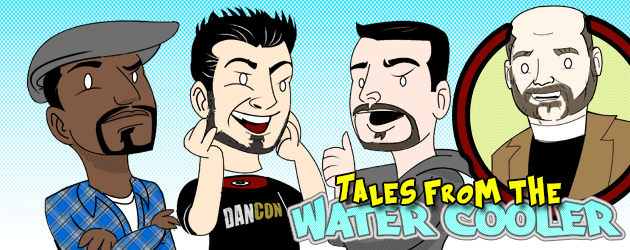Set roughly twenty years in the future, Aftermath is a story about the fallout after a war with an alien race intent on wiping out mankind. The US government developed the Trigger Program. These “Trigs” are specially trained clones with unique powers, created for the sole purpose of defeating the alien Fyr.
Writer: James Hudnall
Artist: Mark Vigouroux
Publisher: Humanoids
Like any great story, it would be hard to explain most of the twists and turns this tale takes. To begin, Aftermath takes place after the war with the Fyr. Humanity won the battle, but remnants of the Fyr still exist. The Fyr began to develop zones all over the Earth that contained alien plant life. Dubbed “Xeno-zones,” the alien plant life would grow and begin to overtake whatever mankind left behind for it to consume. Humankind fights to contain and eliminate this lingering alien threat. The main story takes place around the remaining Trigs. Although they are human clones with superhuman abilities, the fact that they defeated the Fyr has made them somewhat of celebrities. The government, for whatever reason, did not eliminate the Trigs, but let them start a new life after the war. Ares, a remaining Trig, has decided to write a book detailing a lot of the events from the war. This makes someone out there pretty unhappy, and thus begins our story. What happens to clones with superhuman abilities after their purpose has been served?

Set in a not so far future, Aftermath uses some carefully crafted ideas that make it pretty believable. The technology is not so far advanced that it is unbelievable. Guns are still around with a few new twists, and holographic projections are common communication methods. The skytops, which are tethered space stations that only the rich can afford, were also a nice touch. When all of humanity is at stake, it is pretty believable that governments would go to the greatest extremes to fight back, and human clones with extraordinary powers seems to be in that realm. The key is that these powers don’t just come out of the blue, but are fused with technology. Mite-generators, a sort of nanotechnology, allow the Trigs to use these various powers. Ares for example can touch an object and create an explosion of the magnitude he decides. He controls the mites with his mind, and they blow up. The Trigs are also at physical perfection, but this comes with the cloning technology.
Mark Vigouroux does a fantastic job at telling this story through his art. Midway through Aftermath, you start to realize that despite the grand ideas being used, Vigouroux’s art is really down to earth. One of the first things you will notice is how simple it is. He does not use big explosions or exaggerated poses to get across his point. He masters the art of flow and form to really display what writer James Hudnall is trying to say. This was easily his strongest suit artistically. Although Vigouroux does not draw every line and every detail into each and every panel, his art comes across as very natural. The way each person stands, even the more action oriented scenes, comes across as exactly how it would seem in real life. Try taking one of the panels Vigouroux drew, and picture it in your head. Now try to imagine it coming out differently. Difficult, isn’t it? That’s because Vigouroux keeps it simple, but exactly how it should be. Now, don’t mistake labeling Vigouroux’s art as simple and easy. It takes a lot of time for an artist to make panels seem so simple, and that is where the beauty of Vigouroux’s effort comes into play.
The panel-to-panel flow was one of the strongest points for Aftermath. As mentioned above, the flow in this story seemed very natural. Hudnall and Vigouroux were very in sync when working together, making for a seamless read. There were points in the story when two events were happening at the same time, and Hudnall and Vigouroux managed to switch between both stories from panel to panel pretty quickly without jarring the reader’s senses. Also, there were some very nice panoramic shots just before readers are sent into a new environment that did a great job of setting the scene and environment.

James Hudnall has crafted an energetic story. Right from the start, the action begins and so does the mystery, which made for a compelling tale the whole way through. Some writers find it difficult to find a balance between giving characters a voice and progressing a story, but Hudnall manages to do both with ease. Using the names of gods for the Trigs was a nice touch, adding a sense of difference or even superiority to these characters. Each Trig has a unique set of skills and their own personality. This isn’t to say others didn’t, though. Even a character like Agent Reyes, who is a pretty typical cop, was interesting. The story as a whole wasn’t the most innovative, but the manner in which it was told made for an engaging adventure. Hudnall managed to combine mystery, action, drama, and science fiction into an imaginative story.
French publishing house Humanoids has yet again produced a first-class story. Aftermath, along with many other titles that publisher Humanoids produces, is a diamond in the rough. A compelling story that is effortless to read and leaves a lasting impression. The synchronicity between Hudnall’s story and Vigouroux’s art makes for a very realistic, simple but effective science fiction story. Vigouroux’s art, while lacking in grand explosions or eye popping colours, more than makes up for this in his realistic depictions of the human form, and effortless panel-to-panel narrative. Combined with Hudnall’s carefully structured story, Aftermath makes for a great ride. Kudos to Humanoids for continuously producing some extraordinary stories.
Mike Parente
mike@comicattack.net





